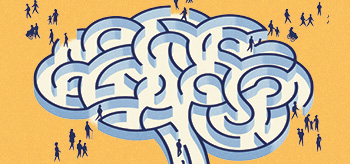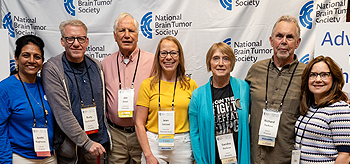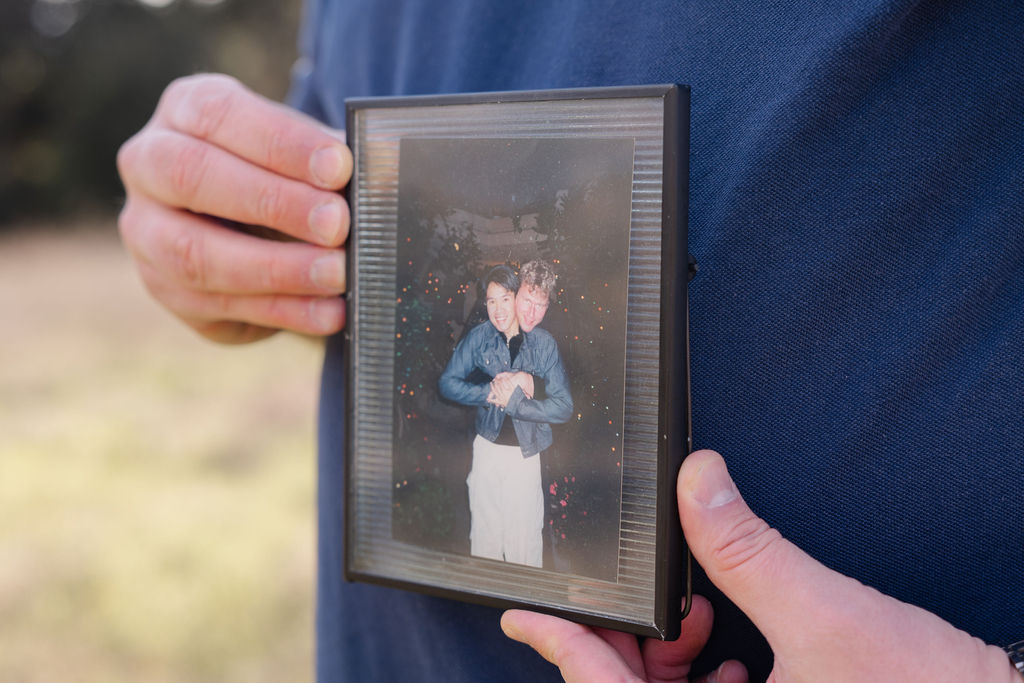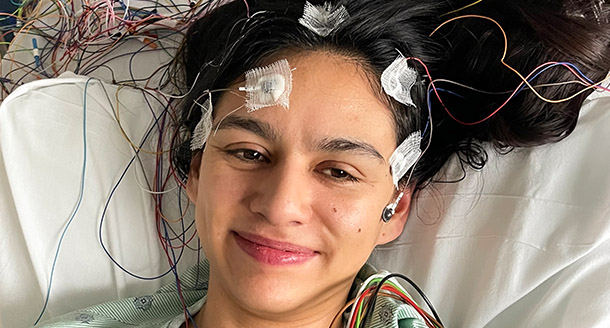My husband Joe (that’s his American name) was born in Laos on September 11, 1973. When Joe was around five years old, his family escaped Laos over the Mekong River to Thailand with bullets whizzing over their heads as they were escaping at night. They left everything behind and spent about 1-2 years in a refugee camp before coming to America, where they mostly settled in San Diego.
After graduating high school, Joe attended the prestigious Fashion Institute of Design & Merchandising in Los Angeles. Upon graduating, Joe worked for a company that designed and sold designs to places like JCPenney, Kohl’s, Sears, and smaller boutique shops around LA.
Joe was very energetic, not only in his personal life but also at work. They say if you love what you do, you never have to work a day in your life, and that’s exactly how Joe treated his job. He loved the creativity of fashion design.
A Giant Brain Tumor
Joe started having headaches in 2016. He’d go to the doctor, and they would just say, “It’s a migraine. Go take aspirin.” He’d go back to the doctor, and they would say the same thing. Even his medical doctor friends would say it’s just a migraine.
He loved his job, but it was stressful and high-pressure because you had to create a new line every month so the salespeople could go out and sell it. Everyone attributed his headaches to migraines and a stressful job.
One day, he was at work and started vomiting. His boss referred him to his doctor, who requested a CT scan. Two weeks after my 50th birthday, we got the news that he had a giant tumor in his head the size of a jumbo egg.
At the time, we didn’t know what it was. All hell broke loose from there. It was a whirlwind of stress and anxiety. I’ve never been through anything as difficult as that period was.
We got follow-up MRIs with and without contrast. We were given a big stack of pamphlets and went to the Huntington Library, Art Museum, and Botanical Gardens, and just walked around a little bit. We found a nice bench in the shade, and we started bawling our eyes out as we read and prepared for surgery the next week.
We were told, “You need to get this giant tumor out of your head, or you’re going to die within a week or two.” We didn’t have time to call around for second opinions or fly to other cancer centers.
Surgery and Treatment
They were able to tell that it was cancer right there while he was in surgery, but they had to send it out to the lab to have it analyzed to learn the type of tumor.
When the surgery was over, Joe’s neurosurgeon said, ”The interior of the tumor was necrotic (dead).” And I said, “Well, what does that mean?” The neurosurgeon explained, “It just means it was fast growing.” And then he looked at me, gave me a big hug, and said, “It’s not good.” Based on the neurosurgeon’s years of experience, he believed it to be glioblastoma. Pathology results later confirmed it was glioblastoma.
We’re bawling our eyes out in the waiting room. We went to see Joe in his ICU room, and we had to fake it and put a smile on our faces and wipe the tears away. We tried to be cheery while he was in the ICU room and recovering. It was just terrible.
One month after the surgery, Joe started his radiation and his chemotherapy treatments.
Joe had three brain surgeries in total, with the last one resulting in left-sided paralysis. After the third recurrence, the tumor had spread to the other part of his brain and down to his brainstem. It was inoperable.
At the time, I was too stressed out to think clearly. In hindsight, I wish I had taken my own short-term disability leave sooner so that I could have taken care of Joe daily instead of him going to a nursing home. But you aren’t thinking clearly at the time. As Joe became closer to death, we took him out of the nursing home and moved him down to family in San Diego.
Finding a Reason to Live
My dearest Tingkham (Joe) was taken in the prime of his life, at the peak of his career, and at the pinnacle of our loving relationship in 2018. It nearly killed me, his caretaker.
There’s anxiety when you’re going through the treatments, and then when he’s on his deathbed. Once he passes, there is still anxiety trying to plan the funeral and make it through the funeral.
Once the funeral’s done, you’re sitting at home alone, and depression sets in. We were together for 20 years, and I wasn’t sure how I could live 20 more years without him.
I started attending the National Brain Tumor Society’s Southern California Brain Tumor Walk in 2022. Doing these events and supporting these charities gave me a reason to live. Now, I continue to live and have a purpose — trying to do everything that I can to see that there’s a cure before I die of old age.
If you are struggling with your mental health, please know you are not alone.
Call or text the 988 Suicide & Crisis Lifeline at 988, let your health care team know so they can help, seek a counselor, join a support group like our Brain Tumor Support Conversations, or practice self-care through exercise and meditation to improve your emotional well-being.





